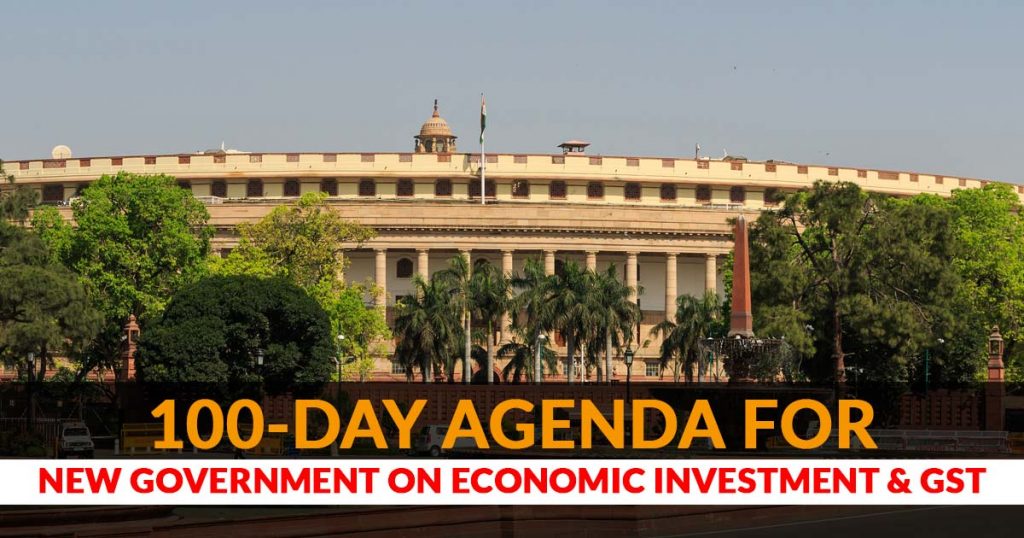
With the finalization of Lok Sabha election results, the finance ministry is full-fledged ready with the 100-day agenda for the new government. The preparation of this agenda is a step taken by the FinMin, after receiving orders from Prime Minister’s Office, with the antecedence motive of boosting the economy which declined to 6.6 per cent in the third quarter of 2018-19.
The other considerations included in this agenda are instigating private investment, creating more employment and providing alleviation to the farm sector.
In reference to the taxes, the agenda focuses on furbishing direct and indirect tax collection and simplification of tax procedure under the GST regime.
The Prime Minister’s Office had ordered all finance ministries and departments to compound 100-day agenda for the new government which will soon take office in the near days. The agenda encompasses exhilarating industrial growth, increasing credit growth, strengthening the banking sector and financing the unfunded.
Consolidation in the banking sector, as one of the important consideration of the agenda, FinMin focuses on introducing corporate administration in the banking industry along with a more diversified board framework. The finance ministry to further revamp its EASE (Enhanced Access and Service Excellence) giving attention to the six themes of customer responsiveness, responsible banking, credit off take, PSBs as Udyami Mitra, deepening financial inclusion and digitalisation and developing personnel for a brand of public sector banks.
The economic decline to 6.6 per cent in the third quarter of 2018-19 is one of the major cornerstone or reason behind the preparation of this agenda.
Read Also: Security of GSTN Data – Government’s Centre Priority/Concern
Industrial output growth slowed to a 20-month low of 0.1 per cent in February, mainly because of the shrinkage in the manufacturing sector.
As per the reports published by the Central Statistics Office (CSO), Factory output is shown hike by 6.9 per cent in terms of the Index of Industrial Production (IIP) in February 2018.
The fiscal year 2017-2018 showcased the growth of 4.3 per cent during April-February while the same period of the present fiscal year 2018-19 encountered comparatively lesser growth of 4 per cent.
This period witnessed the worst decline in passenger vehicle sales also when the sales in India dropped by 19.87 per cent. The domestic sales dwindled for the sixth straight month in April to 2,47,541 units in comparison to 2,98,504 units of the year-ago month, this is the most ruining fall since October 2011.
According to reports published by the Society of Indian Automobile Manufacturers (SIAM), the month of April could not fetch high sales of two-wheelers and commercial vehicles. All major segments of vehicles suffered a downturn.
This is the high time when the government needs to assimilate some advancements and reformations in the economic areas including land, labour and banks to elevate the economic growths and to achieve stability in the macroeconomics for India’s high growth curve.
The interim Budget 2019-20 states the fiscal deficit target of 3.4 per cent for the current fiscal year ending March 31. But aberrance from the procedure determined in the Fiscal Responsibility and Budget Management (FRBM) Act, led the government to fix the fiscal deficit for the next financial year at 3.4 per cent of GDP, replacing the original target of 3.1 per cent.